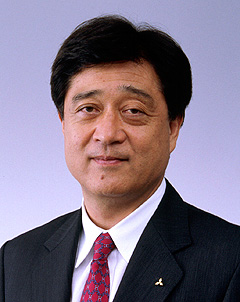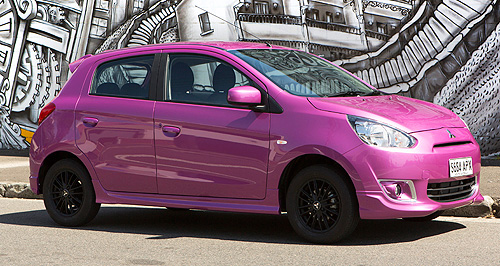News - MitsubishiElectric resistance for MitsubishiGoing slow: Mitsubishi's global chief says there are a number of reasons behind sluggish sales of the i-MiEV. Mitsubishi president says long-term view needed on electric vehicle sales19 Oct 2012 By JOHN MELLOR MITSUBISHI continues to have faith in the future of electric vehicles, despite disappointing sales of the i-MiEV in Europe and sluggish sales of electric vehicles in general in a number of other markets. Mitsubishi Motors Corporation president Osamu Masuko told GoAuto the company was taking a long-term view on EVs and the take-up in the market would “not be in a short given time”. “We thought that the i-MiEV in Europe would be a core vehicle but unfortunately the economic situation there is very stagnated,” Mr Masuko told us in a private interview at the Australian International Motor Show this week. “Also, because of the high Japanese Yen, we have not really seen the result that we anticipated with EVs. “I think we need a longer span in our perspective. “The reason the electric vehicle is not selling very well is due to restrictions such as the high price points and the lack of infrastructure for charging. “That is something that I anticipate time will resolve. It is not something I am worrying about. “The problem with EVs is the range with 80 to 200km, which is not really sufficient. That is why we took the challenge and developed the PHEV (plug-in hybrid electric vehicle), which can cover up to 800km. “So new technology can resolve those issues. I must say the human race is very capable of finding the resolutions to its challenges. That is the great power that we possess.” MMC plans to introduce EVs or PHEVs on eight of its core vehicle platforms, providing petrol, diesel, electric and hybrid choices for buyers.  Left: Mitsubishi Motors Corporation president, Osamu Masuko. Left: Mitsubishi Motors Corporation president, Osamu Masuko.Mr Masuko told GoAuto that offering EV and hybrid powertrain choices on its eight platforms enabled it to reduce the investment risk that other companies were exposed to when they built specific EV-only cars and hybrids. “The basic concept is that we have a common platform. Whether we make a petrol, diesel, PHEV or EV will depend on the (specific demands) in the markets in each region. “I think the demand (for different powertrains) will vary, but it would take too much time and money to develop (a specific version) to meet each market requirement. So we will share the platform (and install the EV or hybrid powertrain) according to each market’s requirement.” Asked where MMC, which has suffered severe financial setbacks in the past 15 years, would get the resources for such an ambitious EV/hybrid engineering program, Mr Masuko said the company first developed electric vehicles 45 years ago, “so you can imagine all the know-how that we have accumulated over the years”. “The development of our pure electric vehicle then led to the development of the plug-in hybrid electric vehicle. This technology doesn’t just come (overnight) but has accumulated over many years. “We also have prominent engineers who are very, very keen to explore new developments and new technology, and we are very lucky with these engineers. “Having said that, I think maybe we have very good engineers, but (as a company) we are not very good at making money. They cannot make money, so my task is to change that culture.” Mr Masuko said MMC was in the process of developing a front-wheel-drive Mirage EV. He was not in a position to “anticipate the timing” of “when it will be achieved”, but said he did “not anticipate it would take long”.  Read more18th of October 2012  AIMS: Mitsubishi prices Outlander, specs MirageAussie Mirage specs revealed as Mitsubishi announces $29K entry to new Outlander6th of September 2012  Paris show: Mitsubishi plug-in Outlander does 880kmHybrid Mitsubishi Outlander PHEV details emerge ahead of Paris motor show24th of August 2012  Plug-in Mitsubishi Outlander to be cheaper than VoltPioneering 2013 Mitsubishi Outlander plug-in hybrid to have ‘mainstream’ pricing |
Click to shareMitsubishi articlesResearch Mitsubishi Motor industry news |
















Facebook Twitter Instagram